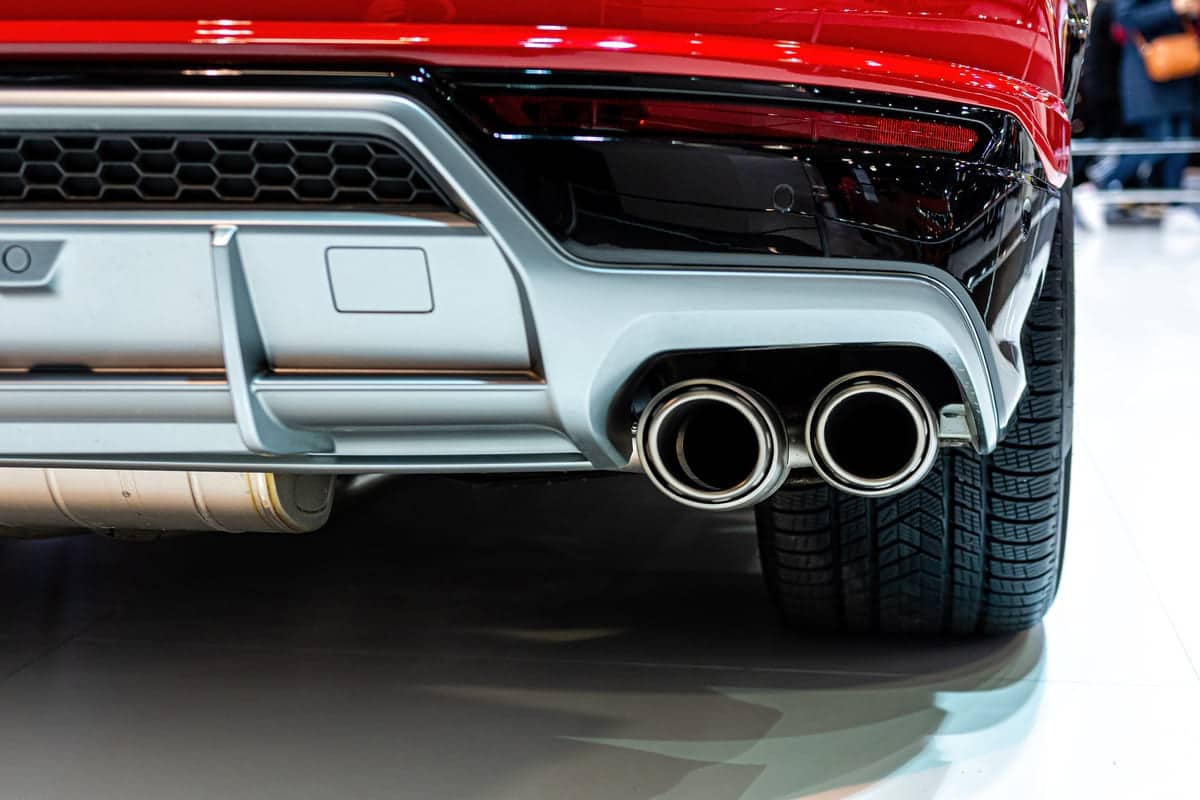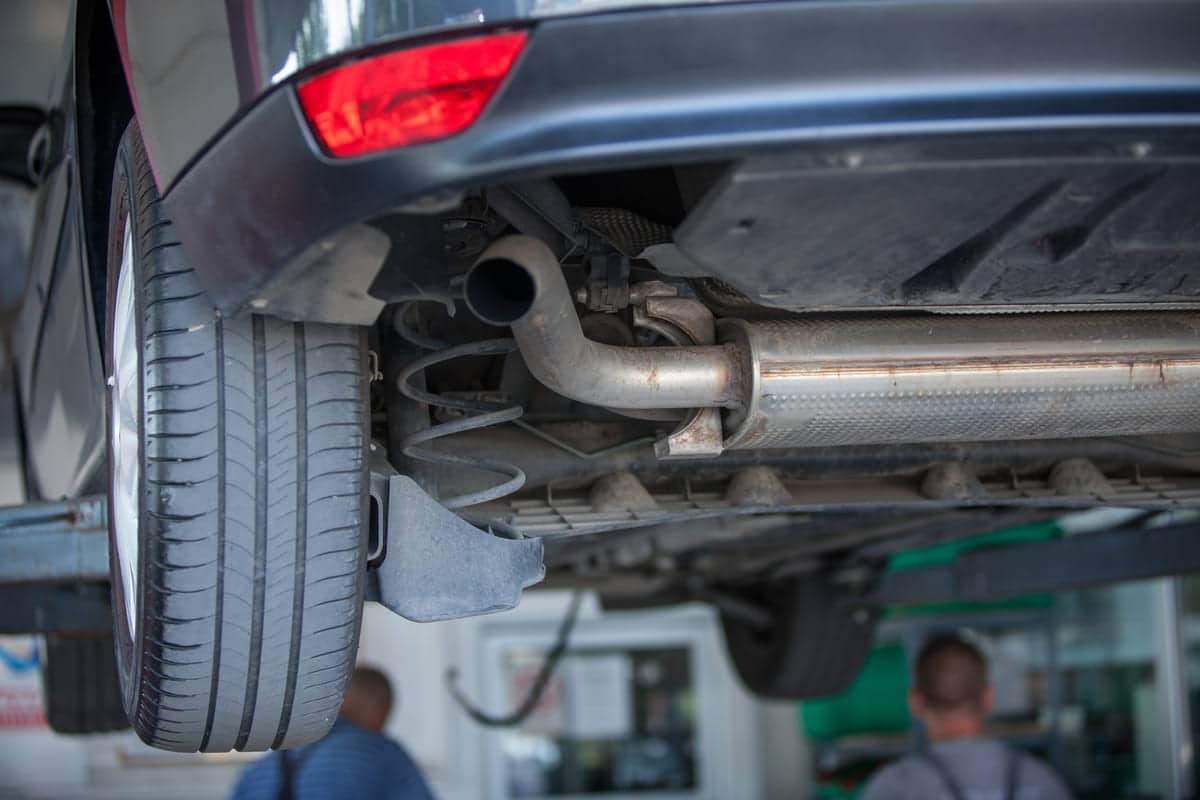The exhaust system has many parts, the manifold, catalytic converter and tailpipe all working together to manage and filter engine emissions. It’s not just about vehicle performance, it’s big on fuel efficiency and reduces the environmental impact of cars.
What is an Exhaust System?
An exhaust system is like a pipe for the gasses that come out of a car’s . The engine burns fuel to make the car go and this creates gasses. These gasses need to get out of the engine so the exhaust system helps guide them out safely.
First the gasses go through the exhaust manifold which collects them from different engine cylinders. Then they go through the catalytic converter which changes bad gasses into good ones.
Finally the gasses go through the muffler and tailpipe which reduces noise and releases them into the air. This system helps the car run better and keeps the air cleaner. It’s important because it makes driving safer and quieter.
References
- Exhaust System. Retrieved from
What are the Main Components of an Exhaust System?
The exhaust system is big part of a car’s performance and environmental impact. It manages the gases from the engine to get them out of the vehicle safely and efficiently.
Each part of the exhaust system works together to reduce emissions and noise to make a cleaner and quieter driving experience. It helps the engine to run smoother and maintain fuel efficiency and environmental standards.
Parts of an exhaust system:
- Exhaust manifold
- Catalytic converter
- Oxygen sensors
- Muffler
- Tailpipe
References
- What is an Exhaust System? Everything You Need to Know. Minit-Tune. Retrieved from
How Does an Exhaust System Work?
An exhaust system helps a car manage the gasses from the engine. It gets the gasses out of the car safely, reduces noise and pollution. The system helps the engine to perform better and meet environmental standards, makes driving smoother and cleaner. Let’s see how it works step by step.
Step 1: Collecting Gasses
The exhaust manifold collects gasses from the engine’s cylinders. Imagine it as a big hand grabbing the gasses from each cylinder and bringing them together. This step gets all the gasses going in the same direction, preparing for cleaning and reducing pollution.
Step 2: Changing Bad Gasses
Gasses go to the catalytic converter next. This device is like a chemical cleaner, changes bad gasses into less bad ones. It has a special material inside that changes the gasses, making them safe to release into the air. This step reduces pollution and keeps the environment cleaner.
Step 3: Monitoring Efficiency
Oxygen sensors monitor the gasses as they go through the system. They are like the car’s health check-up tools, to make sure the engine burns fuel efficiently. These sensors help the car’s computer to adjust for better fuel consumption and performance, to make the car run smoother.
Step 4: Reducing Noise
The muffler is next. It’s like a silencer, reduces the noise of the rushing gasses. Inside the muffler the sound waves bounce around, gets quieter before it gets out of the car. This step makes driving quieter without loud engine noise.
Step 5: Releasing Gasses
Finally gasses exit through the tailpipe. This pipe gets the cleaned gases out of the car to the atmosphere. By this time the gasses are less bad and noise is reduced, the exhaust system’s job is done. This step ensures the and comfort of the driver and the environment.
References
- Automotive Exhaust System. HowStuffWorks. Retrieved from
- How Do Vehicles’ Exhaust Systems Work?. Park Muffler. Retrieved from
- How Does a Car Exhaust System Work?. Delphi Auto Parts. Retrieved from

How to Know Your Exhaust System Needs Maintenance?
Your vehicle’s exhaust system is crucial in controlling emissions and making your engine run efficiently. By directing bad gases away from the engine it reduces pollution and noise. Keeping it in good condition is important for optimal vehicle performance and environmental responsibility.
Signs Your Exhaust System Needs Attention
Decreased Gas Mileage
If you notice your vehicle consumes more fuel than usual, it might be an exhaust system issue. Poor performance of the catalytic converter or leaks can cause decreased fuel efficiency.
Strange Noises or Rattling Sounds
Hear unusual noise from under the car? This could be a loose or damaged exhaust component, like the muffler or a pipe. Rattling means parts are not securely fastened.
Unpleasant Odors
Strong smell of sulfur or other bad odors entering the cabin? This means exhaust leaks. Leaks can be harmful to health and means exhaust gases are not coming out of the vehicle properly.
Check Engine Light
The check engine light might come on due to exhaust system issues. Problems with the catalytic converter or oxygen sensors often triggers this warning, means you need to have it checked thoroughly.
Vibrations or Loss of Power
Feeling vibrations in the steering wheel, gas pedal or brake pedal? This might be exhaust system problem. Loss of power also comes with these vibrations, affects vehicle performance.
Taking Action
If you experience any of these signs, consult a trusted mechanic promptly. They can conduct a detailed inspection and accurately diagnose the issue. Ignoring these signs can lead to more significant problems and higher repair costs in the future.
Regular Maintenance
To prevent exhaust system issues, regular maintenance is crucial. This includes checking and replacing worn-out components like mufflers, catalytic converters, and oxygen sensors. Keeping these parts in good condition ensures your vehicle runs smoothly and efficiently.
By staying alert to these signs and maintaining your exhaust system, you help ensure your vehicle’s longevity and optimal performance.


